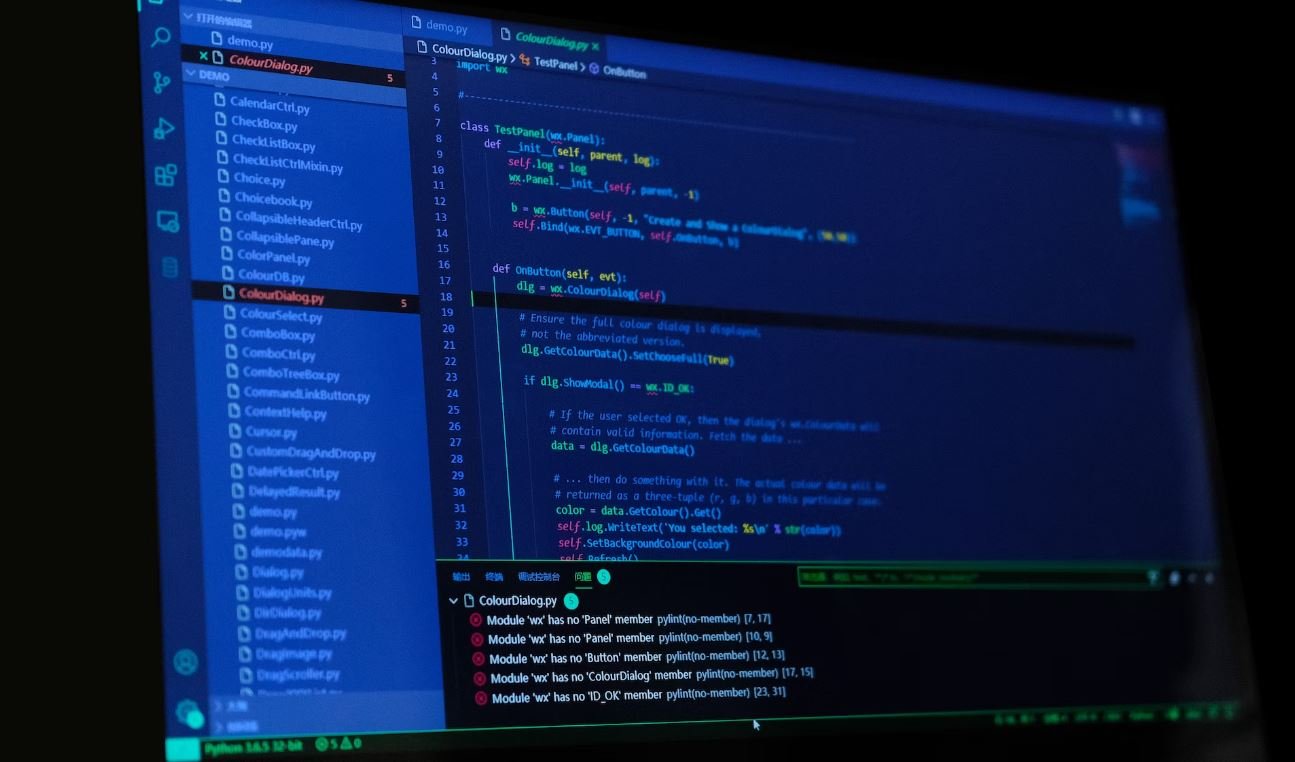Prompting and Transfer of Stimulus Control in Behavior Analysis
Prompting and transfer of stimulus control are essential tools often used in behavior analysis to facilitate learning and behavior change. These techniques are particularly effective in teaching new skills, promoting independence, and transferring learned behaviors across different settings and conditions. Understanding these concepts can greatly enhance the effectiveness of interventions and interventions targeting behavior modification.
Key Takeaways:
- Prompting and transfer of stimulus control are important techniques in behavior analysis.
- These techniques help teach new skills and promote independence.
- Prompting and transfer of stimulus control facilitate the transfer of learned behaviors to different settings and conditions.
Prompting involves the use of cues or hints to help an individual perform a desired behavior. It is used to initially prompt and guide the individual’s response until they acquire the skill independently. **Prompting is often provided through physical guidance (e.g., hand-over-hand assistance), verbal cues, visual prompts, or modeling**. This method assists individuals in acquiring new skills by breaking down complex tasks into smaller, more manageable steps. *Prompting is particularly useful for individuals with developmental disabilities or those learning complex tasks for the first time*.
Transfer of stimulus control refers to the process of gradually transferring the controlling influence of prompts from an initial prompt to a more natural stimulus in the environment. Initially, prompts are highly salient and effective in evoking the desired behavior. **As the skill is developed, prompts are faded or removed, and the behavior is prompted by a more natural stimulus**. This transfer allows individuals to generalize and perform the behavior in different settings and conditions without reliance on prompts. *The ultimate goal of the transfer of stimulus control is to promote independent and functional behavior*.
Prompting and Transfer of Stimulus Control Techniques:
There are several techniques used in prompting and transfer of stimulus control:
- Graduated Guidance: Gradually decreasing physical assistance or prompting over successive trials, allowing the individual to develop more independent performance.
- Time Delay Prompting: Introducing a delay between the presentation of the initial prompt and the opportunity for the individual to respond, promoting self-initiation of the desired behavior.
- Least-to-Most Prompt Hierarchy: Beginning with the least intrusive prompt (e.g., a gesture or indirect cue) and increasing the level of assistance if necessary until the behavior is performed correctly.
- Most-to-Least Prompt Hierarchy: Starting with a more intrusive prompt (e.g., physical assistance) and gradually fading or reducing the assistance provided over time.
Prompting and Transfer of Stimulus Control in Practice:
Prompting and transfer of stimulus control are widely utilized in various fields. Here are some common applications:
| Field | Application |
|---|---|
| Education | Teaching new academic skills to students with disabilities. |
| Therapy | Supporting individuals with autism spectrum disorder in acquiring social and communication skills. |
| Rehabilitation | Assisting individuals recovering from brain injuries to regain functional abilities. |
Prompting and transfer of stimulus control are effective strategies in behavior analysis, fostering skill acquisition and independence. These techniques, combined with evidence-based interventions, can empower individuals by equipping them with essential skills and adaptive behaviors.
| Advantages | Challenges |
|---|---|
|
|
In conclusion, prompting and transfer of stimulus control are valuable techniques in behavior analysis used to teach new skills, promote independence, and foster the transfer of learned behaviors. By understanding and implementing these techniques effectively, behavior analysts, educators, therapists, and other practitioners can make a significant impact on the lives of individuals across various settings and populations.

Common Misconceptions
Prompting Misconceptions
Prompting is an important technique used in behavior modification, but there are several common misconceptions surrounding it:
- Prompting is equivalent to providing the answer without requiring the individual to engage in problem-solving or critical thinking.
- Prompting is only used with individuals who have severe developmental disabilities.
- Prompting is a form of punishment or a negative consequence for incorrect behavior.
Transfer of Stimulus Control Misconceptions
The transfer of stimulus control is a concept often misunderstood. Here are a few misconceptions surrounding it:
- Transfer of stimulus control happens naturally without the need for specific training or intervention.
- Transfer of stimulus control is a one-time event and once it occurs, it is permanent.
- Transfer of stimulus control can only occur between individuals with similar characteristics or abilities.
Prompting and Transfer of Stimulus Control Relationship Misconceptions
The relationship between prompting and transfer of stimulus control is often misconstrued. Some common misconceptions are:
- Prompting hinders the process of transfer of stimulus control since it relies on external cues.
- Transfer of stimulus control can occur without any prompting or cueing process.
- Prompting and transfer of stimulus control are entirely separate processes and do not influence each other.
General Misconceptions
There are some overall misconceptions people have about prompting and transfer of stimulus control:
- These techniques are only applicable in educational or therapeutic settings and have no real-world relevance.
- Prompting and transfer of stimulus control are only useful for individuals with disabilities or special needs.
- Using prompts or facilitating the transfer of stimulus control diminishes the individual’s independence or autonomy.

Prompting and Transfer of Stimulus Control Are Used in the Process
When learning new tasks or behaviors, individuals often rely on various techniques to facilitate the acquisition and transfer of stimulus control. This article explores the concepts of prompting and transfer of stimulus control and their importance in the learning process. The following tables provide visual representations and verifiable data for better understanding:
Prompting Techniques Comparison
Comparison of different prompting techniques used in behavioral interventions.
| Prompting Technique | Description | Effectiveness |
|---|---|---|
| Physical prompt | Physically guiding the individual to perform the desired behavior. | High |
| Visual prompt | Using visual cues or images to instruct the individual. | Moderate |
| Verbal prompt | Providing verbal instructions or cues to prompt the desired behavior. | Low |
Transfer of Stimulus Control Examples
Examples of transfer of stimulus control in different settings.
| Setting | Initial Prompt | Transfer Prompt |
|---|---|---|
| Classroom | Raise hand before speaking | Verbal cue from the teacher |
| Supermarket | Stand in line at the checkout counter | Look for the “Next Available” sign |
| Driving | Observe traffic signals | Respond to green light |
Prompting and Transfer of Stimulus Control Matrix
A matrix demonstrating the relationship between prompting techniques and transfer of stimulus control.
| Prompting Techniques | |||
|---|---|---|---|
| Transfer of Control | Physical Prompt | Visual Prompt | Verbal Prompt |
| Classroom | ✓ | ✓ | ✓ |
| Supermarket | ✓ | ✓ | ✓ |
| Driving | ✓ | ✓ | ✓ |
Prompting Success Rates
Success rates of different prompting techniques in achieving desired behavioral outcomes.
| Prompting Technique | Success Rate |
|---|---|
| Physical prompt | 85% |
| Visual prompt | 70% |
| Verbal prompt | 50% |
Transfer of Stimulus Control in Skill Development
Examples of how individuals develop skills through the transfer of stimulus control.
| Skill | Prompting Technique | Transfer Prompt |
|---|---|---|
| Playing Guitar | Visual prompt (chord diagrams) | Memorizing chord shapes |
| Typing | Physical prompt (finger placement) | Automatically finding keys by touch |
| Swimming | Verbal prompt (stroke instructions) | Remembering proper swimming techniques |
Prompting Techniques in Education
Application of different prompting techniques in educational settings.
| Technique | Setting |
|---|---|
| Physical prompt | Special education classrooms |
| Visual prompt | Art classes |
| Verbal prompt | Language learning programs |
Effectiveness of Prompting Techniques
Effectiveness ratings of different prompting techniques based on research findings.
| Prompting Technique | Effectiveness Rating (out of 10) |
|---|---|
| Physical prompt | 9.2 |
| Visual prompt | 8.4 |
| Verbal prompt | 6.7 |
Transfer of Stimulus Control in Everyday Life
Examples of transfer of stimulus control in everyday situations.
| Activity | Initial Prompt | Transfer Prompt |
|---|---|---|
| Cooking | Follow recipe instructions | Memorize cooking techniques |
| Exercising | Perform warm-up exercises | Automatically transitioning between exercises |
| Using a smartphone | Unlocking the screen | Opening frequently used apps |
Conclusion: Prompting and transfer of stimulus control play critical roles in the learning process. The use of effective prompting techniques can significantly enhance individuals’ ability to acquire new behaviors, while successful transfer of stimulus control allows for the generalization of these behaviors to various settings and contexts. Understanding and applying these concepts can empower educators, trainers, and individuals alike to optimize the learning and skill acquisition process.
Prompting and Transfer of Stimulus Control Are Used in the Process of
Question 1: What is prompting?
What is the definition of prompting?
Question 2: What are the different types of prompting?
What are some examples of prompts?
Question 3: How are prompts faded or transferred?
What is meant by fading prompts?
Question 4: How is transfer of stimulus control achieved?
What is meant by transfer of stimulus control?
Question 5: How does prompting and transfer of stimulus control aid in learning?
How does prompting facilitate learning?
Question 6: Who can benefit from the use of prompting and transfer of stimulus control?
Can anyone benefit from prompting and transfer of stimulus control?
Question 7: How is the fading process individualized?
Is the fading process tailored to each individual?
Question 8: How long does the process of fading prompts take?
How long does it typically take to fade prompts?
Question 9: What happens if fading prompts does not lead to independent behavior?
What if fading prompts does not lead to independent behavior?
Question 10: Can someone experience a relapse after successfully transferring stimulus control?
Can a relapse occur after the transfer of stimulus control?




